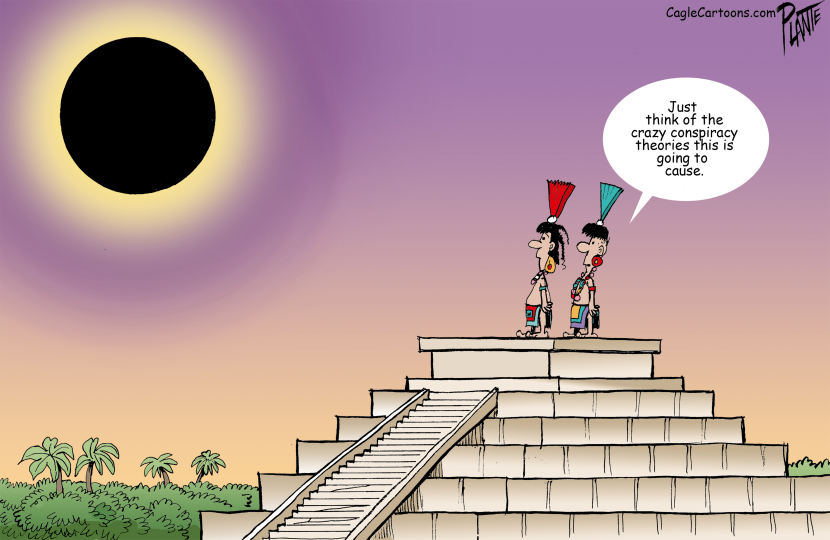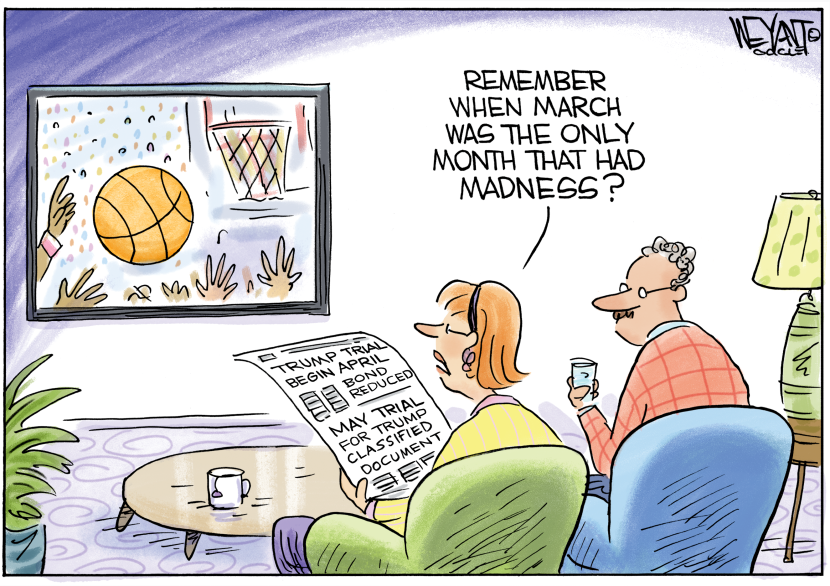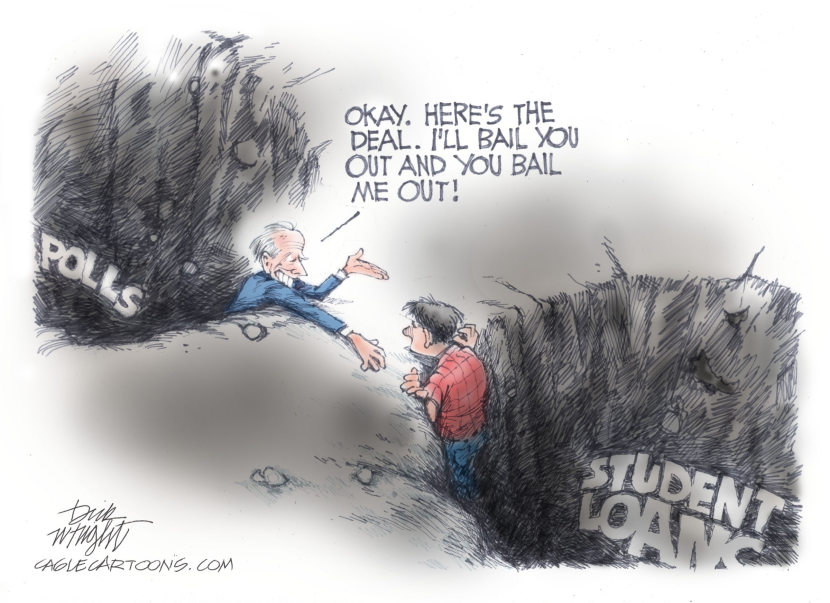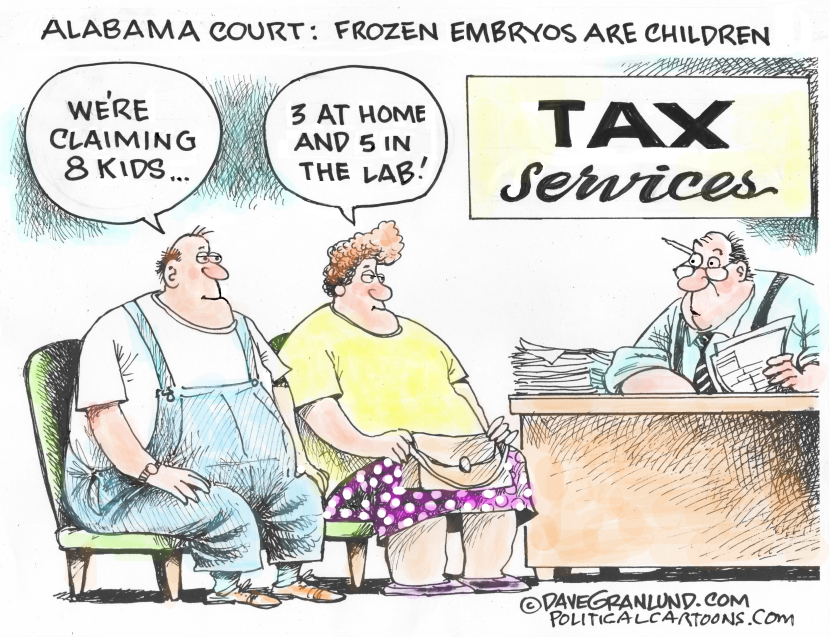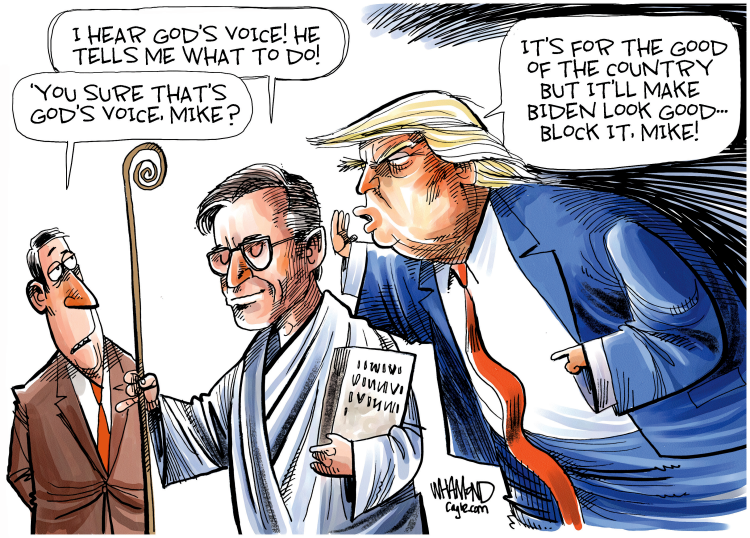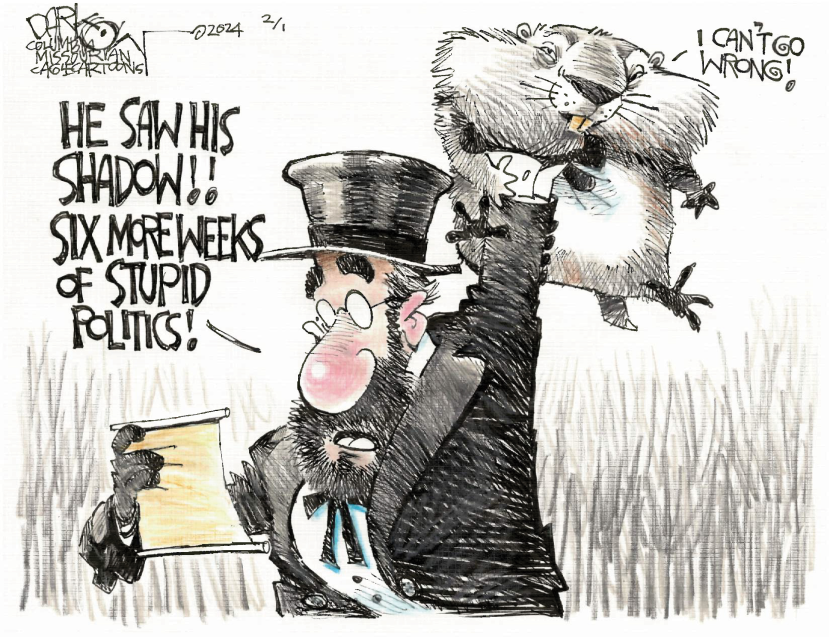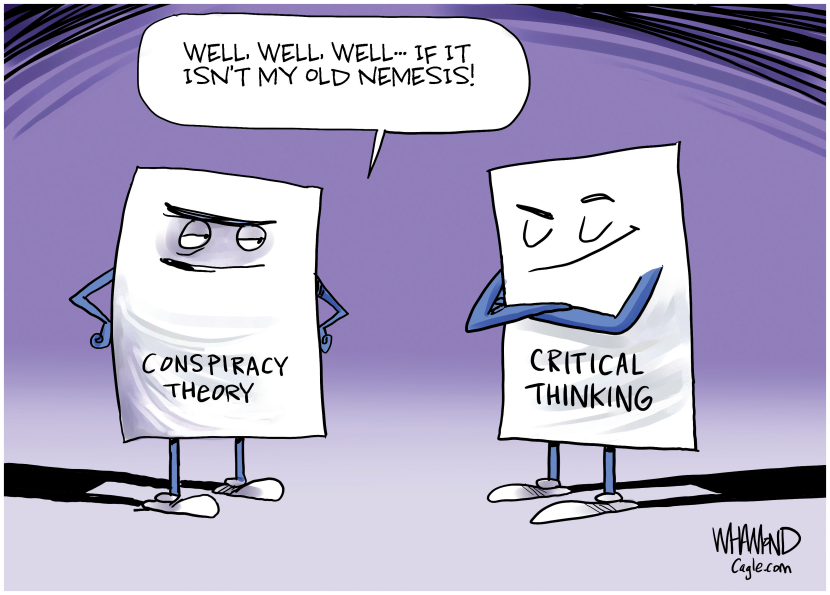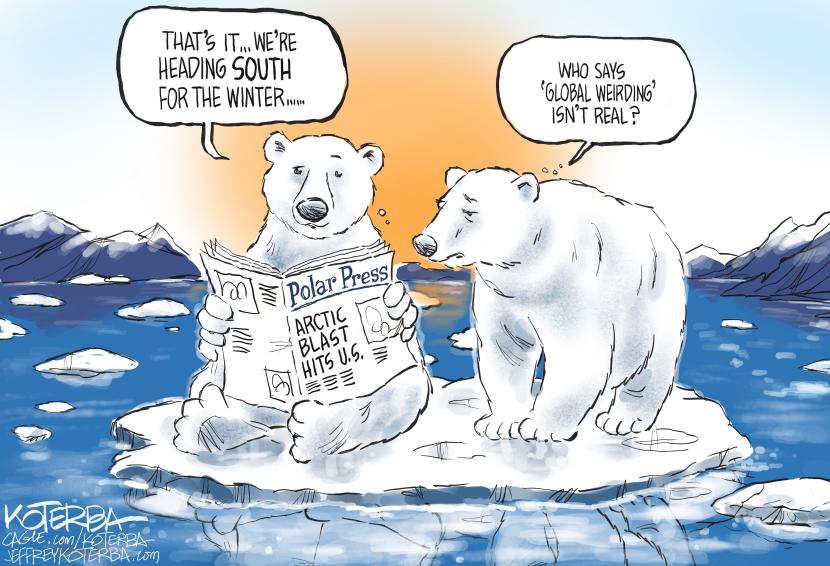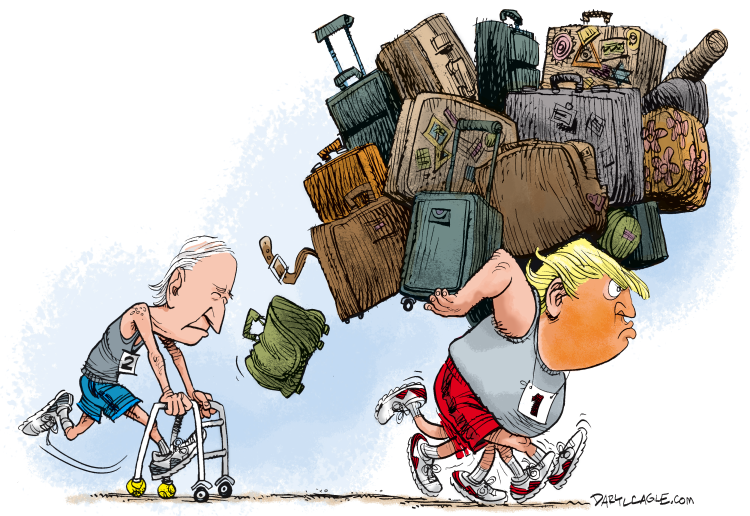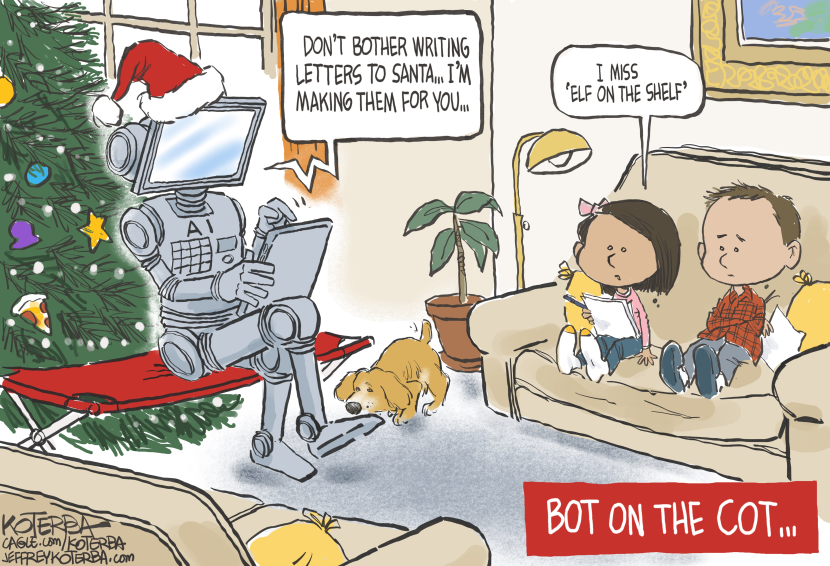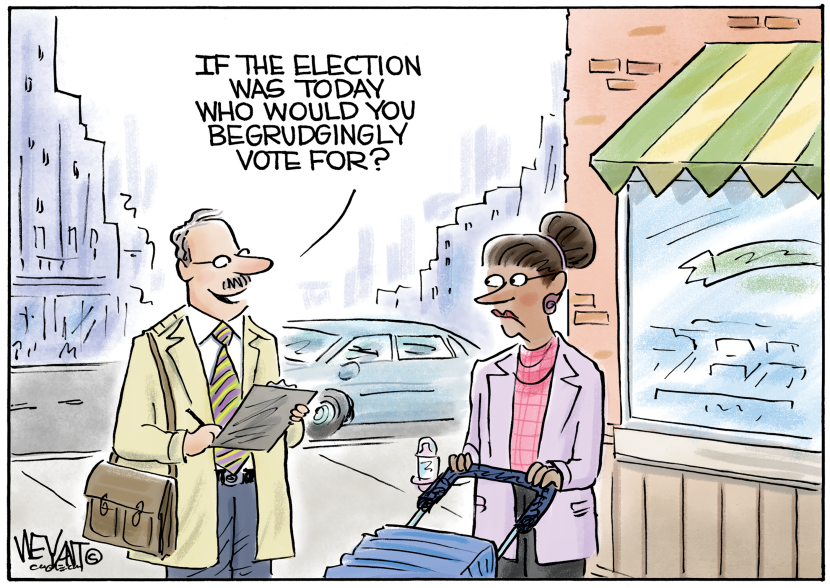I wear three hats, as a cartoonist and as the leader of a “syndicate” that resells a package of editorial cartoons and columns to over 800 newspapers in the USA –my third hat is running our big Cagle.com Web site. I love editorial cartoons. I do what I love. But, love can be painful …
 Our troubled editorial cartooning profession has been losing employee positions in roughly the same proportion as all newsroom jobs lost over the past couple of decades. Journalism has become a freelance profession, and so has editorial cartooning. Three of our CagleCartoonists recently lost their jobs, Patrick Chappatte with The International New York Times, Nate Beeler with The Columbus Dispatch and Rick McKee with The Augusta Chronicle. Bad news for editorial cartoonists seems to be coming in at a faster clip.
Our troubled editorial cartooning profession has been losing employee positions in roughly the same proportion as all newsroom jobs lost over the past couple of decades. Journalism has become a freelance profession, and so has editorial cartooning. Three of our CagleCartoonists recently lost their jobs, Patrick Chappatte with The International New York Times, Nate Beeler with The Columbus Dispatch and Rick McKee with The Augusta Chronicle. Bad news for editorial cartoonists seems to be coming in at a faster clip.Conservative editors don’t like the liberal cartoons; angry readers demand retribution from newspapers and cartoonists who offend them; timid newspapers fear losing readers who are easily offended; all are just spice in our complex stew, which started brewing when newspapers lost their the bulk of their advertising revenue to the internet, and began a slow decline in circulation.

American editorial cartoonists are mostly liberal, and most American newspapers are rural and suburban papers serving conservative readers, so there is a supply and demand disparity. Liberal cartoons don’t get reprinted as much, because there is an over-supply of liberal cartoons. That said, conservative cartoons expressing strong opinions also don’t get reprinted much. The cartoons that are increasingly the most reprinted are the funny cartoons that express little or no opinion at all.
One of our clients, The China Daily, is owned by the Communist government in China; they asked me, “Daryl, how many of your cartoons express no opinion? Those are the cartoons we want.” The Chinese aren’t much different from American editors in this regard –except that they are more blunt.
When Trump was elected we were flooded with calls from unhappy editors complaining that, “all the cartoons I like have stopped!” The problem was that cartoonists stopped drawing the Hillary and Obama bashing cartoons that conservative editors preferred. We put up a selection of “Trump Friendly Cartoons” near the top of our CagleCartoons.com site that helps conservative editors find the cartoons they like in a sea of liberal cartoons they dislike; this helped to stop the hemorrhaging of conservative subscribers.
We’ve also seen a continuing trickle of newspapers drop their entire editorial pages, including the editorial cartoon. I’m told that editorial pages make readers angry and don’t bring in income. And, of-course, newspapers are going out of business.

I’m often asked about whether Trump and our polarized political environment are behind the decline of editorial cartoons. There is plenty that is wrong in our troubled profession, but it isn’t as simple as editors rejecting the Trump-bashing cartoons. This stew was brewing long before Trump.
–Daryl Cagle
